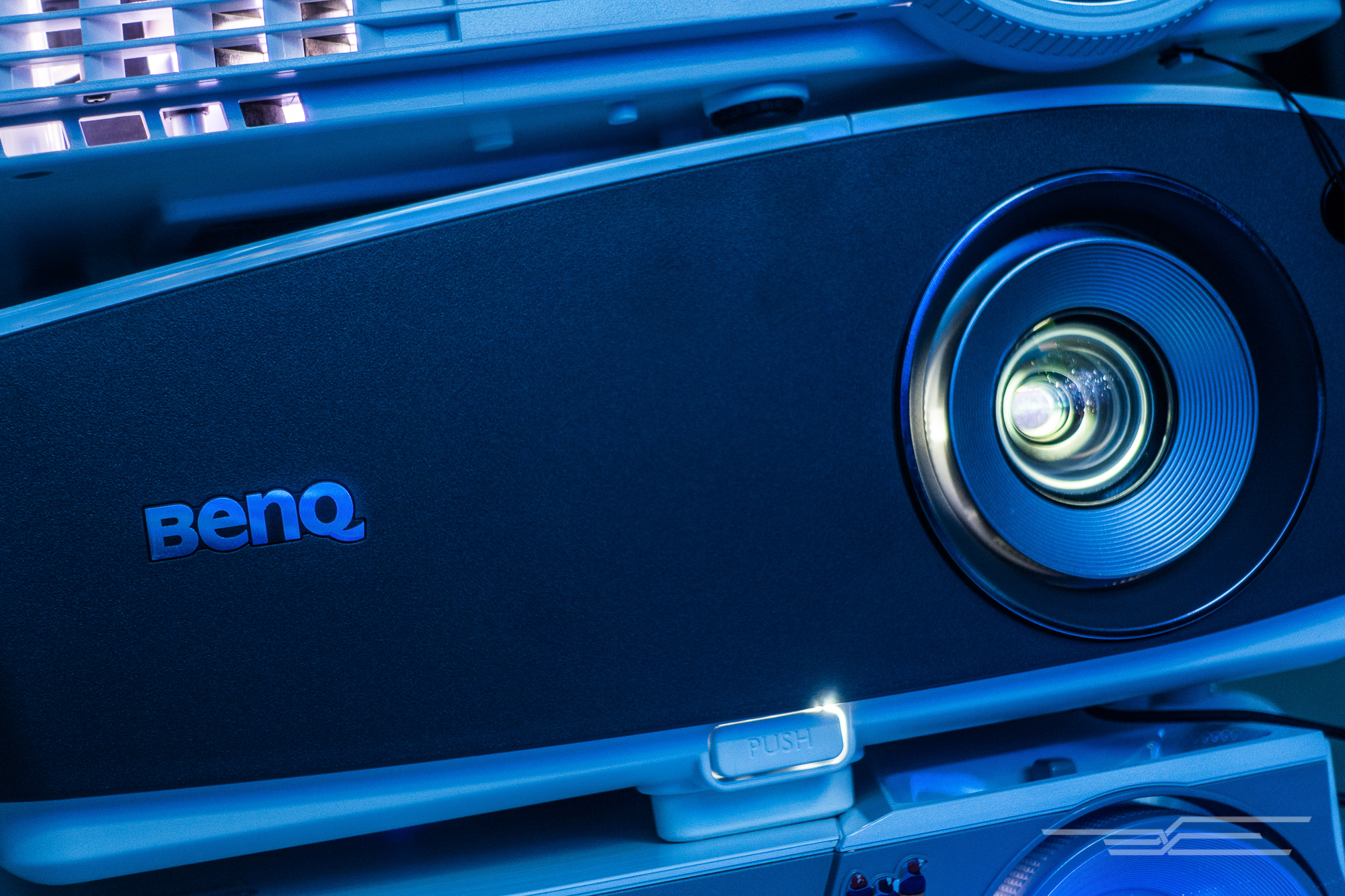
By Chris Heinonen
This post was done in partnership with The Wirecutter, a buyer’s guide to the best technology. When readers choose to buy The Wirecutter’s independently chosen editorial picks, they may earn affiliate commissions that support their work. Read the full article here.
After testing five projectors for 70 hours, we’ve concluded that the BenQ TH670 is the best cheap projector. It offers the best contrast ratio and the best color quality of everything we tested, as well as 1080p resolution, low input lag for video games, integrated speakers, plenty of lumens for any size screen, a backlit remote, and up to 10,000 hours of life from a single bulb. It also provides the best selection of image adjustments, with settings that are easy to understand, so it gives you more control over the displayed image than its competitors do.
Who this is for
If you already own a 1080p projector, you can stick with what you have. A new, cheap projector is unlikely to offer better performance than a 1080p projector that is a few years old. These days, 1080p resolution is finally becoming affordable enough to appear in models at this pricing tier.
If you have an older 720p or lower-resolution projector, something meant for business presentations, or a cheap LCD projector, a new 1080p model can offer improvements. With a 100-inch or larger image, the difference between 720p and 1080p is much more noticeable than it would be on a 32- or 50-inch TV screen. Newer projectors are also much brighter than models were a few years ago, giving the image more pop and making for a better viewing experience.
Though we like the BenQ TH670, we recommend that anyone looking at a cheap projector seriously consider saving up a bit more (around $200 more as of this writing) and getting our current pick for the best $1,000 projector, the BenQ HT2050.
How we picked and tested
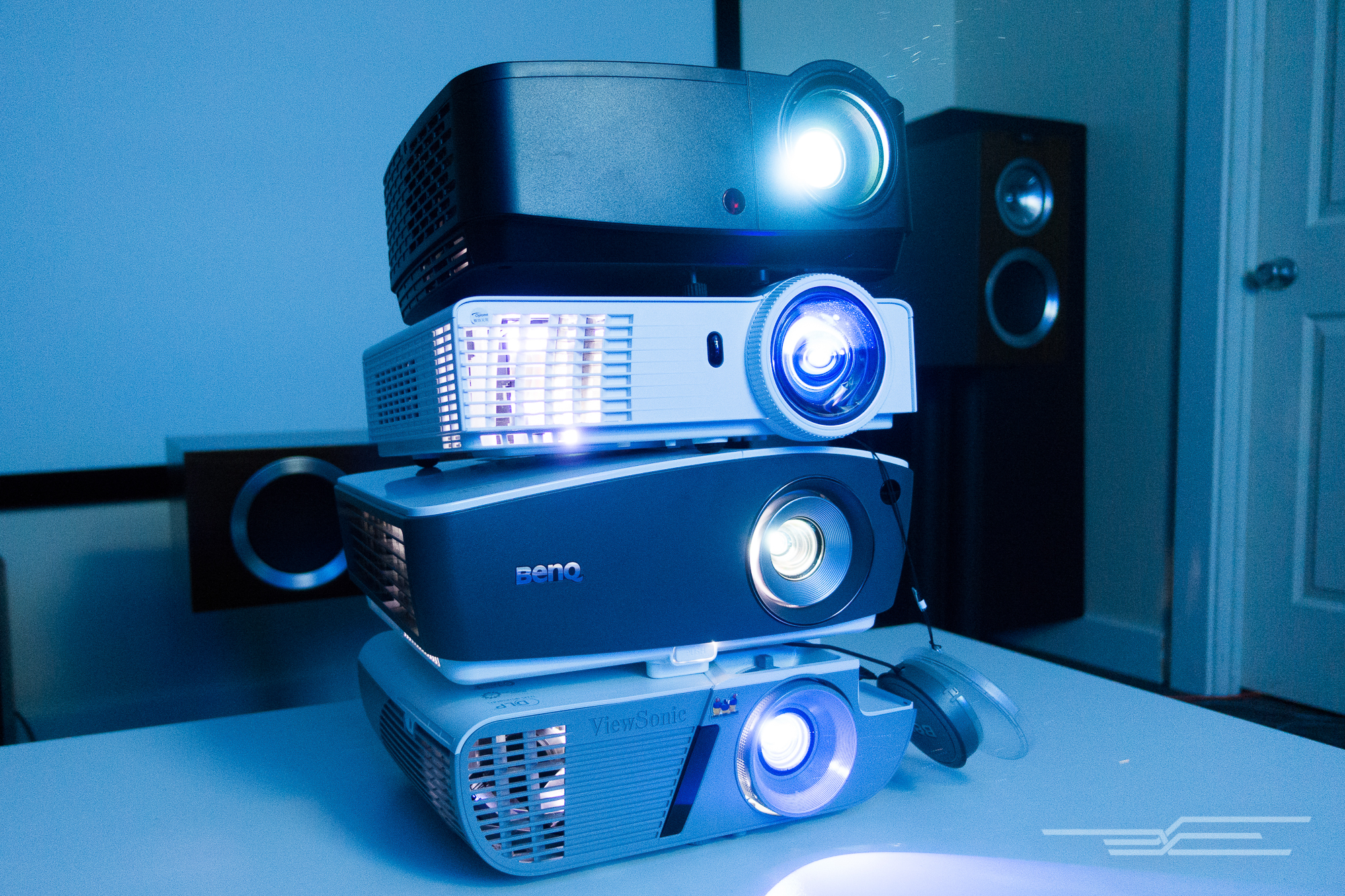
Our contenders (top to bottom): the InFocus SP1080, the Optoma GT760, the BenQ TH670, and the ViewSonic PJD7828HDL. Photo: Chris Heinonen
Because most people buy a projector because they want a large image—often 100 inches or larger—having double the resolution of a 720p projector produces easily noticeable results. We decided to look only at cheap projectors with 1080p resolution. This eliminated all non-DLP models from consideration. All of the LCD models in this price range were 720p, or maxed out at a 16×10 resolution such as 1280×800.
Every projector for this test group had to have at least one HDMI input. We also needed a brightness of at least 1,000 lumens to clearly differentiate this category from pico projectors in the same price range. In addition, we looked for integrated speakers, wider zoom range, and standard USB ports to easily connect a streaming device (such as our favorite media streamer, the Roku Streaming Stick) and power it directly from the projector.

Comparing two projectors side by side in a darkened room. Photo: Chris Heinonen
After reading all the reviews we could find for models that fit those criteria, we called in the ones that looked promising: the BenQ TH670, the InFocus ScreenPlay SP1080, the Optoma GT760, and the ViewSonic LightStream PJD7828HDL. We tested all the contenders on a 100-inch Silver Ticket white screen, our current pick for the best projector screen, and measured the results using CalMAN software with i1Pro2 and C6 meters. We also compared each projector side by side on the screen using an HDMI repeater. For most of the testing, we focused on the best image we could get from the projector when calibrating using only a Blu-ray disc; we took this step because we assume most inexpensive projectors won’t get a professional calibration costing hundreds of dollars. We watched a variety of TV, streaming, and Blu-ray content on all the projectors.
Our pick
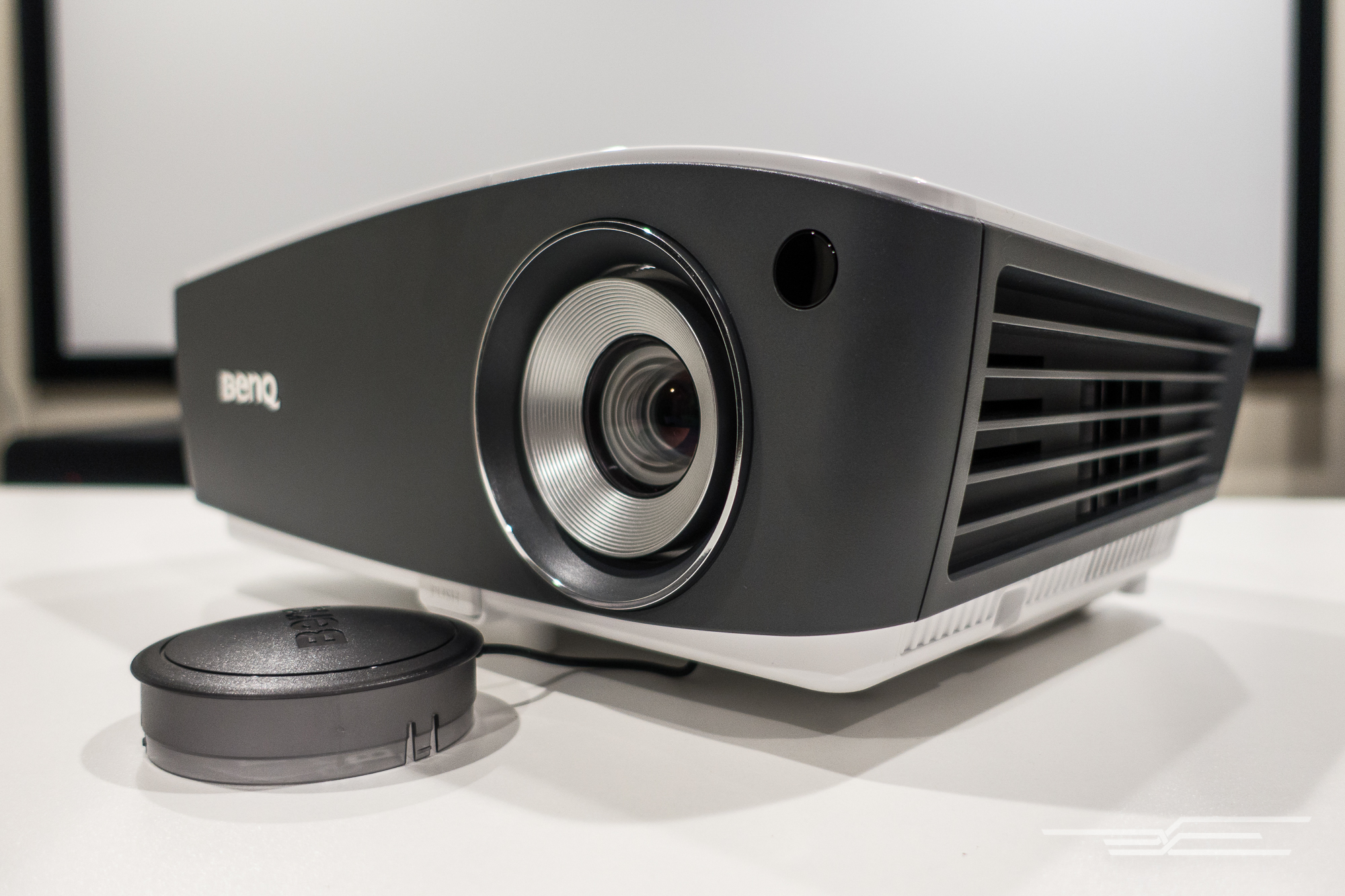
The BenQ TH670 is our top pick. Photo: Chris Heinonen
The BenQ TH670 is the best cheap projector for most people because it offers the best combination of contrast ratios and color accuracy in this price range, and lets you choose which is more important to you. It has a very bright image, lots of flexibility in the controls, a decent zoom range, integrated speakers, a backlit remote control, and 3D support.

Zoom and focus controls on the BenQ TH670. Photo: Chris Heinonen
The BenQ TH670 offered better contrast ratios than all the other inexpensive 1080p projectors we tested. Contrast ratio refers to the difference between the black and white levels a projector can create; it’s by far the most important aspect of a display’s picture quality. A projector with more contrast offers an image that is more lifelike and dynamic than one with a lower contrast ratio. All the DLP projectors we tested achieve their contrast ratios by using a feature called BrilliantColor. What sets the BenQ TH670 apart is that it gives you the ability to disable this feature completely, so you can choose between better contrast or more accurate color. You can read more about color management in our full guide.
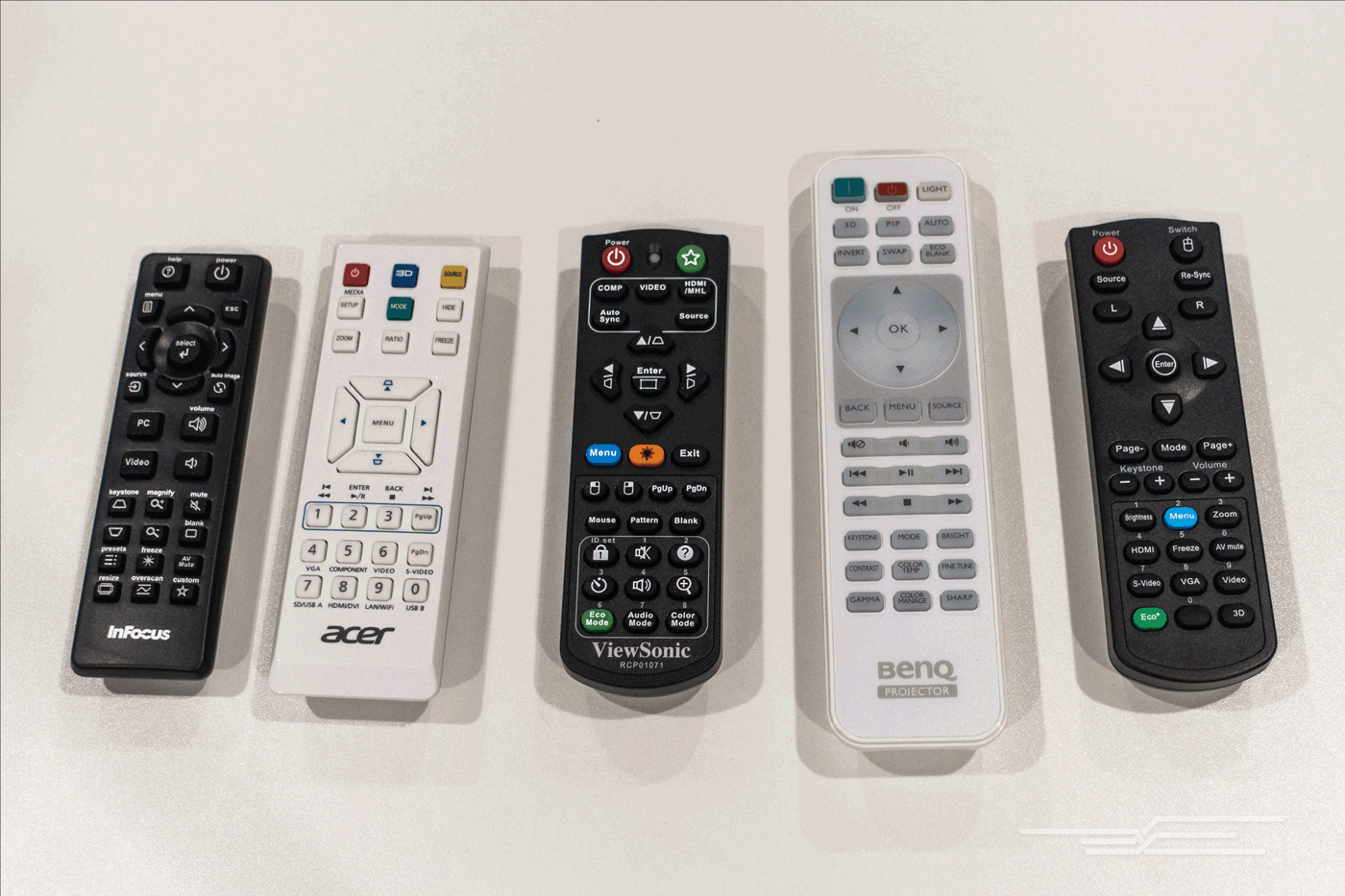
Among the remote controls for the projectors we tested, the BenQ’s stood out. Photos: Chris Heinonen
The BenQ’s integrated speakers do the job but aren’t anything special. For impromptu movie nights or video game sessions, they’ll suffice. If you’re having everyone over to watch football on your big screen, however, the yells of everyone watching will easily overwhelm the sound. Having the integrated speakers is better than not, but they won’t replace a true pair of speakers.
In the most accurate picture mode, the BenQ TH670 produces 970 lumens with BrilliantColor off and 1,939 lumens with it on. On the 100-inch Silver Ticket screen, 970 lumens creates an image that’s 32 foot-lamberts bright. For comparison, the SMPTE-recommended brightness for a projector screen in a dark room is only 14 to 16 foot-lamberts, so the BenQ TH670 is plenty bright. Even when the lamp hits half brightness in a few thousand hours, it will still be bright enough. And if you want to go even bigger, the TH670 creates an image of 23 foot-lamberts on a 120-inch screen.
Runner-up
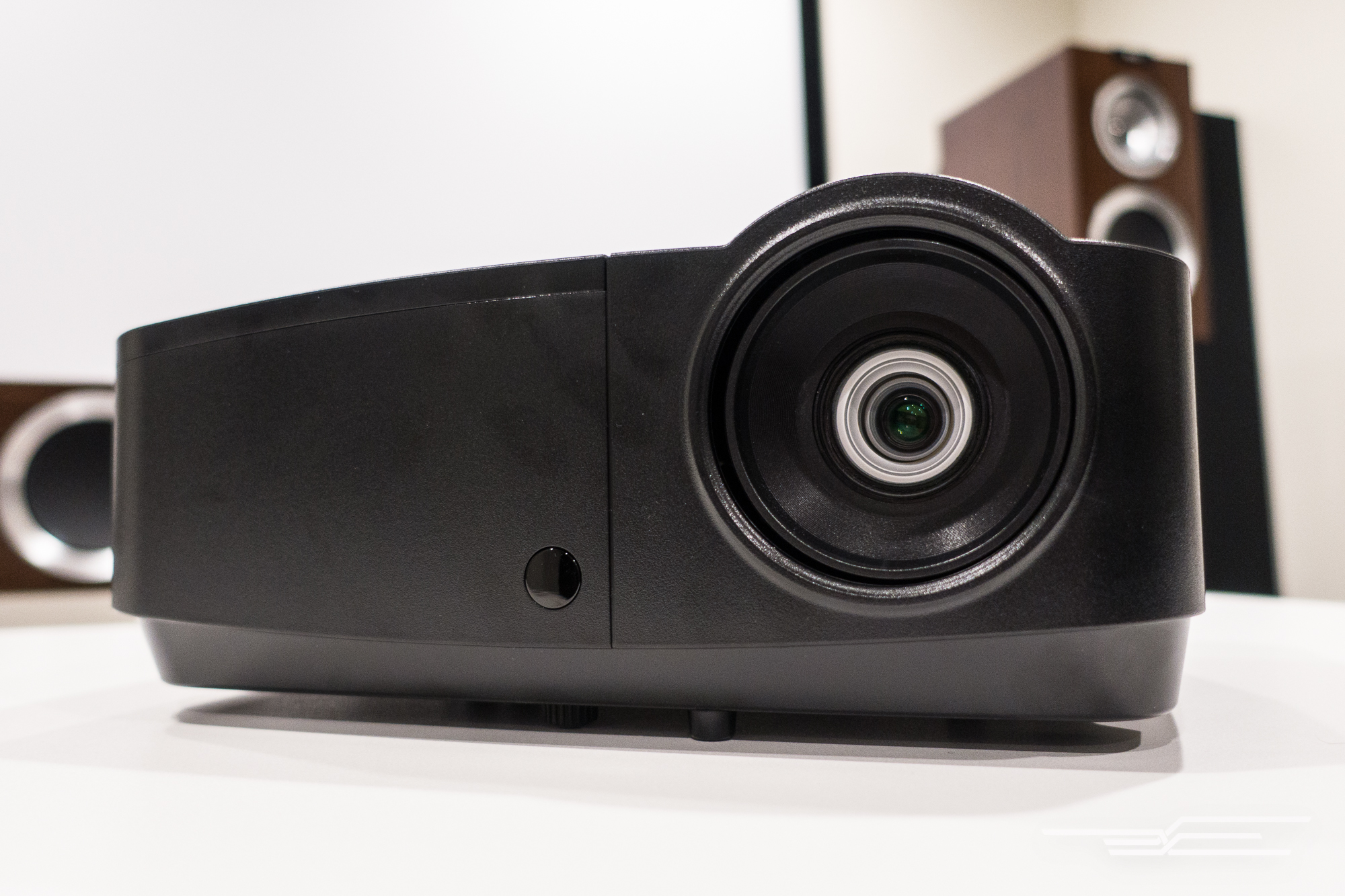
Our runner-up, the InFocus ScreenPlay SP1080. Photo: Chris Heinonen
If the TH670 isn’t available and you don’t want to spend the extra money on BenQ’s HT2050 or HT1075, the InFocus ScreenPlay SP1080 is your next best option. In our tests, this model came in second to the BenQ TH670 in color accuracy and contrast ratio. Unlike the TH670, it offers no way to disable BrilliantColor. It also provides only a single HDMI input, and it lacks a standard USB Type-A port to power a streaming stick.
As for picture quality, the whites on the InFocus SP1080 are slightly bluish next to those of the TH670, though this difference is hard to notice without making a direct comparison. Overall, looking for one of the BenQ models is worthwhile—the TH670 is a nicer projector and worth the small premium over the InFocus SP1080.
Upgrade pick
If you want a better image, look at our picks in our guide to the best $1,000 projector. Our current pick in that category, the BenQ HT2050, is only slightly more expensive than the BenQ TH670. For the additional money, you get much better contrast ratio and more accurate color. This model is easier to install thanks to lens shift and a wider zoom range, and it offers much quieter operation and better performance overall. And dual HDMI ports make hooking multiple devices to it easier.
Care and maintenance
All of these projectors use UHP lamps that need replacing over time. The lamp in the BenQ TH670 is rated for 4,000 to 10,000 hours depending on which mode (Eco or Normal) you run the projector in. Even at four hours of use a day, you should get three-plus years out of the bulb before it requires replacing. When that time rolls around, we recommend buying directly from the manufacturer, as counterfeit lamps are very common elsewhere. Counterfeits can explode, damaging the projector’s internals, and we’ve seen cases where replacement bulbs are dimmer than the half-dead ones they replaced.
We recommend using a Blu-ray disc (you can also use the THX app for iOS or Android if you don’t have a Blu-ray player) to set up your projector correctly. We advise against copying picture settings from what other people post on the Internet, even for the same exact model, because we’ve found that these usually lead to a worse image.
This guide may have been updated by The Wirecutter. To see the current recommendation, please go here.
Note from The Wirecutter: When readers choose to buy our independently chosen editorial picks, we may earn affiliate commissions that support our work.
via Engadget
The best cheap projector